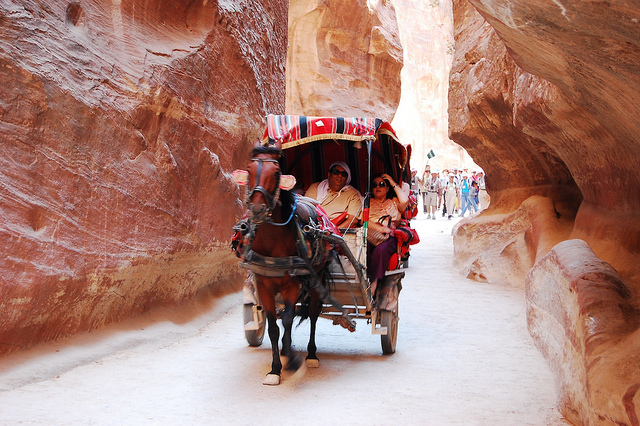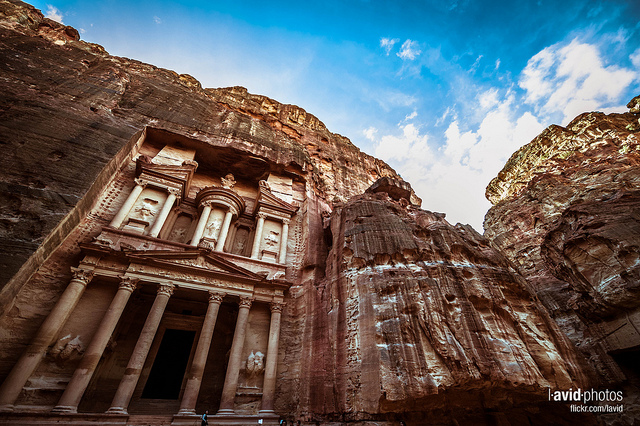
Petra by laviddichterman
Tourists from around the lovely planet come to Jordan to visit the 2000 years old wonders of the red Petra which is a fascinating site of Jordan and the world’s most amazing rock-cut architecture. Some people really don’t exaggerate by saying that Petra is a must seen place before you die. Located on Jabl al-Madhbah (Mount Hur), this UNESCO World Heritage site is the emblem of Jordanian prestige and stature. Jordanian government has conserved the remains of Petra by declaring this area as buffer zone, where no vehicle is allowed. And truly so, Petra seeks all time attention of the world conservation organizations to safeguard Petra from further decay and deterioration and if not done so, once Petra gone, it’ll be gone forever.
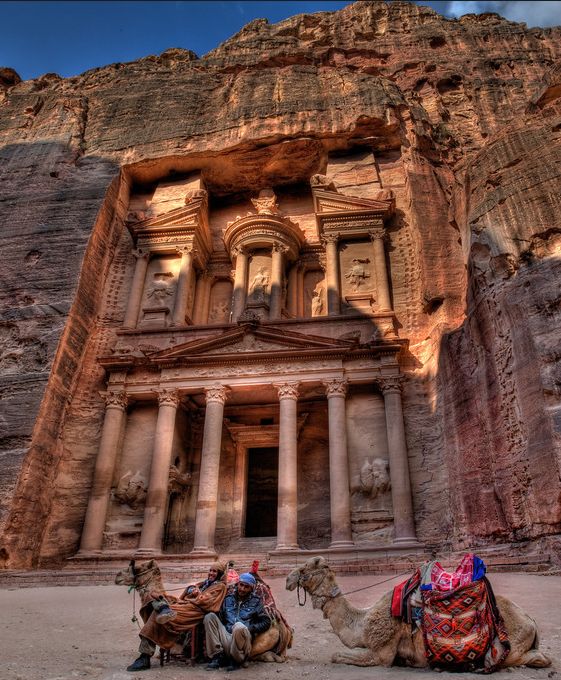
John Ludwig discovered Petra in 1812 and later this fascinating site was identified as the Nabataean caravan-city. It is historically evident that Petra was an important crossroads between Arabia, Egypt and Syria-Phoenicia. Petra is half-built, half-carved into the rock, and is surrounded by mountains riddled with passages and gorges.
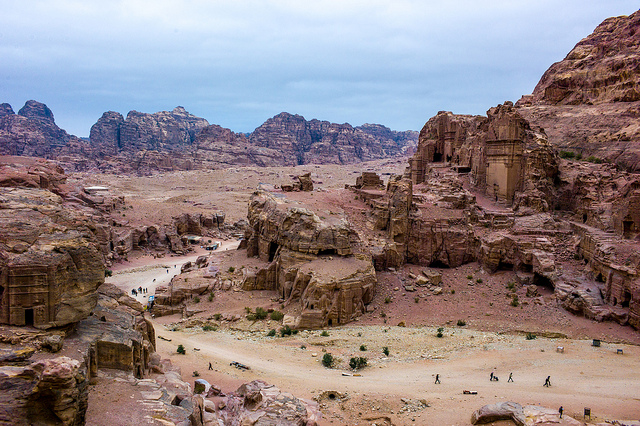
Petra lies south of modern Amman on the edge of the mountainous desert of Wadi Araba, surrounded by towering hills of sandstone which gave the city some natural protection against invaders. It was for centuries the meeting point of the main routes used by camel caravans transporting spices between the Mediterranean and the Near East, Africa and India. Petra was first established around the 6th century BC by the Nabataean Arabs, a Semitic people who laid the foundations of a commercial empire that extended into Syria. In AD 106 Trajan annexed the Nabataean Kingdom as part of the province of Arabia. The many earthquakes that hit Petra triggered a slow decline for the city, which was not halted by its designation as an Archiepiscopal See. The Arabs conquered the city in 636 but it remained distant from the pilgrim road to Mecca. The Crusaders constructed a fort there in the 12th century and Petra returned to its ancient splendor, but soon they withdrew, leaving Petra to the local people until the early 19th century, when it was visited by the Swiss explorer Burckhardt.
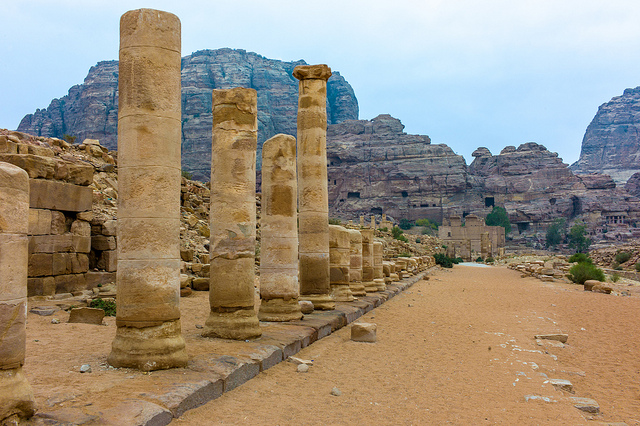
This fascinating site of Jordan suffers from a host of threats, including collapse of ancient structures, erosion due to flooding and improper rainwater drainage, weathering from salt up-welling, improper restoration of ancient structures, and unsustainable tourism. The wonders of the red Petra are beautiful artistic architecture with ingenious engineering and the need of the day is to conserve such extraordinary craftsmanship along with its unique method of water management.
